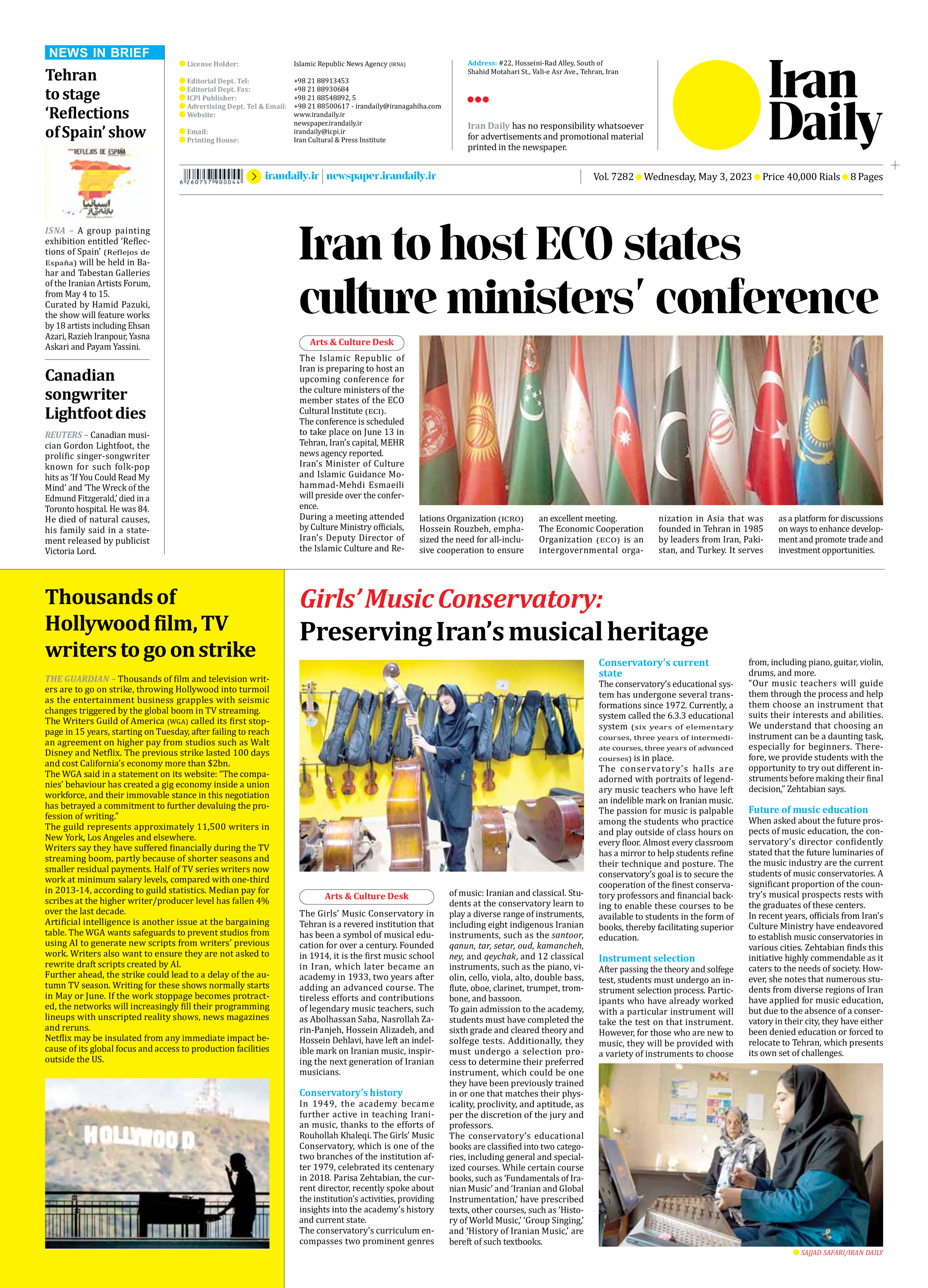
Girls’ Music Conservatory: Preserving Iran’s musical heritage
The Girls’ Music Conservatory in Tehran is a revered institution that has been a symbol of musical education for over a century. Founded in 1914, it is the first music school in Iran, which later became an academy in 1933, two years after adding an advanced course. The tireless efforts and contributions of legendary music teachers, such as Abolhassan Saba, Nasrollah Zarin-Panjeh, Hossein Alizadeh, and Hossein Dehlavi, have left an indelible mark on Iranian music, inspiring the next generation of Iranian musicians.
Conservatory’s history
In 1949, the academy became further active in teaching Iranian music, thanks to the efforts of Rouhollah Khaleqi. The Girls’ Music Conservatory, which is one of the two branches of the institution after 1979, celebrated its centenary in 2018. Parisa Zehtabian, the current director, recently spoke about the institution’s activities, providing insights into the academy’s history and current state.
The conservatory’s curriculum encompasses two prominent genres of music: Iranian and classical. Students at the conservatory learn to play a diverse range of instruments, including eight indigenous Iranian instruments, such as the santoor, qanun, tar, setar, oud, kamancheh, ney, and qeychak, and 12 classical instruments, such as the piano, violin, cello, viola, alto, double bass, flute, oboe, clarinet, trumpet, trombone, and bassoon.
To gain admission to the academy, students must have completed the sixth grade and cleared theory and solfege tests. Additionally, they must undergo a selection process to determine their preferred instrument, which could be one they have been previously trained in or one that matches their physicality, proclivity, and aptitude, as per the discretion of the jury and professors.
The conservatory’s educational books are classified into two categories, including general and specialized courses. While certain course books, such as ‘Fundamentals of Iranian Music’ and ‘Iranian and Global Instrumentation,’ have prescribed texts, other courses, such as ‘History of World Music,’ ‘Group Singing,’ and ‘History of Iranian Music,’ are bereft of such textbooks.
Conservatory’s current state
The conservatory’s educational system has undergone several transformations since 1972. Currently, a system called the 6.3.3 educational system (six years of elementary courses, three years of intermediate courses, three years of advanced courses) is in place.
The conservatory’s halls are adorned with portraits of legendary music teachers who have left an indelible mark on Iranian music. The passion for music is palpable among the students who practice and play outside of class hours on every floor. Almost every classroom has a mirror to help students refine their technique and posture. The conservatory’s goal is to secure the cooperation of the finest conservatory professors and financial backing to enable these courses to be available to students in the form of books, thereby facilitating superior education.
Instrument selection
After passing the theory and solfege test, students must undergo an instrument selection process. Participants who have already worked with a particular instrument will take the test on that instrument. However, for those who are new to music, they will be provided with a variety of instruments to choose from, including piano, guitar, violin, drums, and more.
“Our music teachers will guide them through the process and help them choose an instrument that suits their interests and abilities. We understand that choosing an instrument can be a daunting task, especially for beginners. Therefore, we provide students with the opportunity to try out different instruments before making their final decision,” Zehtabian says.
Future of music education
When asked about the future prospects of music education, the conservatory’s director confidently stated that the future luminaries of the music industry are the current students of music conservatories. A significant proportion of the country’s musical prospects rests with the graduates of these centers.
In recent years, officials from Iran’s Culture Ministry have endeavored to establish music conservatories in various cities. Zehtabian finds this initiative highly commendable as it caters to the needs of society. However, she notes that numerous students from diverse regions of Iran have applied for music education, but due to the absence of a conservatory in their city, they have either been denied education or forced to relocate to Tehran, which presents its own set of challenges.







